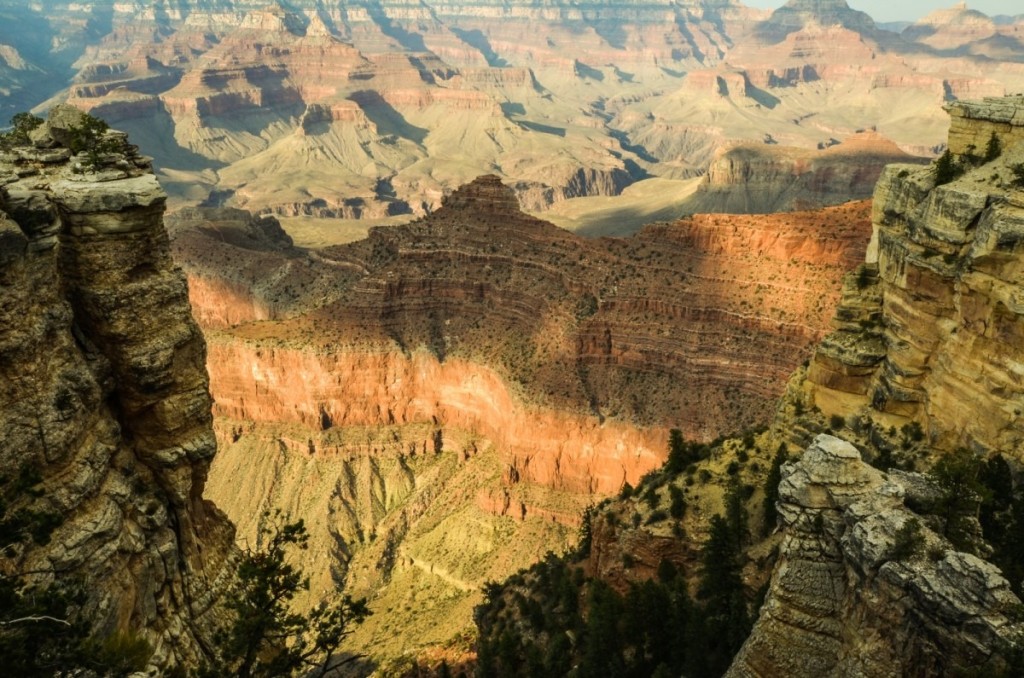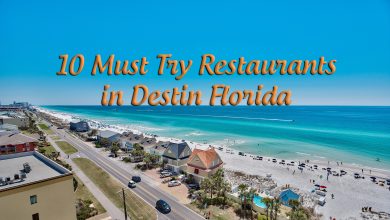
If you’re planning a trip to Arizona, it’s crucial to know when to go and when to avoid. While this southwestern state offers breathtaking landscapes and rich cultural experiences, there’s a time of the year when the weather conditions might not be as welcoming. So, when exactly is the worst time to visit Arizona? Let’s dive in and find out!
Must Read: 8 Best Party Hotels in Scottsdale AZ [Guide for Party Lovers]
Arizona is a beautiful state with a lot of natural resources, but it’s also a state with a lot of environmental challenges.
– Janet Napolitano
Summer Season: Worst Time to Visit Arizona
The worst time to visit Arizona is during the summer, particularly the months of June, July, and August. This period is characterized by extremely high temperatures and little to no rainfall, making outdoor activities and sightseeing less enjoyable and potentially dangerous due to the risk of heat-related illnesses.
| Month | Average High (°F) | Average Low (°F) | Average Precipitation (inches) |
|---|---|---|---|
| January | 67 | 46 | 0.91 |
| February | 71 | 49 | 0.92 |
| March | 77 | 53 | 0.99 |
| April | 85 | 60 | 0.28 |
| May | 95 | 69 | 0.11 |
| June | 104 | 78 | 0.02 |
| July | 106 | 83 | 1.05 |
| August | 104 | 83 | 1.00 |
| September | 100 | 77 | 0.64 |
| October | 89 | 65 | 0.58 |
| November | 76 | 53 | 0.65 |
| December | 66 | 45 | 0.88 |
Arizona’s summer season, which roughly spans from late May to early September, is characterized by extreme heat. This isn’t the mild, sun-bathing type of heat. We’re talking about temperatures that regularly shoot beyond the 100°F mark. Unless you’re a fan of scorching heat, this can make sightseeing and outdoor activities incredibly uncomfortable, if not downright unbearable.
Fun Fact: The highest temperature ever recorded in Arizona was 128°F in Lake Havasu City in 1994.
The Heat Factor
The primary reason summer is considered the worst time to visit Arizona is the intense heat. Arizona’s desert climate means the state experiences some of the highest summer temperatures in the United States. Let’s break this down:
- Phoenix, the capital city, often sees temperatures soaring above 110°F. In the hottest time of the year, temperatures can reach up to 120°F.
- Tucson, another popular city, isn’t far behind with temperatures frequently exceeding 100°F.
If there’s a heat wave, temperatures can become dangerously high, making it a risky time for visitors who are not used to such extreme heat.
Health Risks
Arizona’s high temperatures, especially during summer, can lead to dehydration and heatstroke. It’s not uncommon for temperatures to exceed 100°F (38°C) during the day, posing serious health risks for those not accustomed to such extreme heat. The body can lose fluids rapidly, resulting in dehydration, and in severe cases, heatstroke, a potentially life-threatening condition.

“Dehydration and heatstroke can sneak up on you quickly in Arizona’s intense summer sun. Always carry water with you and seek shade whenever possible.”
Limited Outdoor Activities
Arizona is famous for its outdoor attractions like the Grand Canyon, Monument Valley, and Sedona’s red rocks. But in the peak of summer, these places can feel like a furnace. The scorching summer heat can significantly limit your outdoor activities and can pose health risks.

| Attraction | Summer Temperature |
|---|---|
| Grand Canyon | Above 100°F |
| Monument Valley | 90-100°F |
| Sedona | 90-100°F |
If you are planning a trip to Arizona, it’s important to keep these high temperatures in mind and plan accordingly. Be sure to stay hydrated, wear lightweight and breathable clothing, and avoid spending too much time outdoors during the hottest parts of the day.
Fun Fact: Arizona experiences the highest number of heat-related deaths in the US
Monsoon Season in Arizona: Challenges
While the idea of monsoons in Arizona might sound exotic and exciting, they can present some specific challenges for travelers. Typically lasting from mid-June to the end of September is characterized by intense thunderstorms and heavy rainfall. But it’s not just the rain that might dampen your travel plans. Let’s delve deeper into the challenges you might face during this period.
Also Read: Worst Time To Visit Miami According to Locals & Experts
Flash Floods and Dust Storms
Flash floods are a common occurrence during the monsoon season. These rapid floods can occur within minutes or hours of excessive rainfall. They are unpredictable and can turn a leisurely day trip into a hazardous situation. On the other hand, dust storms, locally known as haboobs, are another significant hazard. These storms can reduce visibility to zero, making driving conditions extremely dangerous.

High Humidity and Thunderstorms
With the monsoons comes high humidity. This can make the already hot temperatures in Arizona feel even hotter, leading to discomfort and potential health risks such as heatstroke. Additionally, the monsoon season is notorious for thunderstorms. They can be quite severe, with high winds, lightning, and even occasional hail. Thunderstorms are not only dangerous, but they can also disrupt travel plans and outdoor activities.
Insect Activity
Mosquitoes, scorpions, and other pests become more prevalent during the monsoon season, possibly causing discomfort and inconvenience to visitors. Therefore, unless you’re ready to handle these minor nuisances, it might be best to plan your visit during a different period.

Arizona in Winter: Good Time to Visit?
When most people think of Arizona, they picture a desert landscape with soaring temperatures. But they might be startled to know that Arizona can get very chilly in winter, particularly in the northern and central parts of the state. Cities like Flagstaff and Prescott frequently see snow, and nighttime temperatures can dip below freezing.
Unpredictable Weather Conditions
Arizona’s winter weather can be exceptionally unpredictable. One day might be sunny and mild, and the next could bring a snowstorm or heavy rain. This inconsistency can make it difficult to pack appropriately and plan outdoor activities.

- Sudden snowstorms: Areas like Flagstaff and the Grand Canyon can experience abrupt snowstorms, causing road closures and travel disruptions.
- Flash floods: Heavy rains can cause rapid, dangerous flash floods, especially in lower-lying areas.
- Frost and ice: Overnight frost and ice can make roads slippery and dangerous, especially in the early mornings.
Daylight Hours
Winter also means shorter daylight hours. If you’re planning to do a lot of sightseeing, keep in mind that the sun sets early in winter, limiting your exploration time. Furthermore, some tourist attractions and outdoor activities may have reduced hours or even close during the colder months.
Flu Season
Just like numerous corners of the US, Arizona’s winter season is also traditionally known for its flu bouts. If you’re planning a trip during this time, particularly if your immune system is a bit vulnerable, it’s crucial to step up your game in self-care and protection.

How to Avoid Flu
- Maintain Good Hygiene: Regular hand washing with soap and water can prevent the spread of germs. If soap and water are not readily available, use hand sanitizers.
- Get Vaccinated: A flu shot is the best way to avoid the flu. It’s best to get your vaccination prior to your trip.
- Boost Your Immune System: A healthy diet, regular exercise, and plenty of sleep can strengthen your immune system and help you fend off any potential infections. Supplementing with vitamins and minerals may also be beneficial.
- Avoid Close Contact: Try to avoid close contact with sick people as flu is highly contagious. Maintain a safe distance whenever possible.
- Don’t Touch Your Face: Try to avoid touching your eyes, nose, and mouth, as these are common areas where flu viruses enter the body.
Editor’s Pick: 10 Awesome Things To Do in Strawberry AZ- From Leisurely to Thrilling
Tourist Season in Arizona – Most Crowded Months
The busiest months in Arizona are typically from November through April, when the weather is more enjoyable, and the scorching summer heat is a distant memory. This period, known as the ‘snowbird season,’ sees an influx of out-of-state travelers seeking milder winter climates. Cities like Phoenix and Tucson are usually bursting with tourists during these months.
Note: ‘Snowbird season’ refers to the time of year when individuals from colder climates travel to warmer places like Arizona to escape the harsh winter. These temporary residents, often retirees, are dubbed ‘snowbirds.’

What to Expect During Peak Season
The peak tourist season in Arizona can be both exciting and bustling. Here’s what you might expect:
- Higher accommodation prices: Hotel rates tend to rise during this period due to the surge in demand.
- Crowded attractions: Popular sites like the Grand Canyon, Sedona, and Antelope Canyon see a significant increase in visitors.
- Busy restaurants and bars: Dining out might require reservations, as many places get booked quickly.
- Increased traffic: With more tourists comes heavier traffic, especially in larger cities like Phoenix and Tucson.
Recommended Read: Worst Time to Visit Las Vegas – Month-by-Month Guide Included
Off-Peak Months in Arizona
Visit Arizona during off-peak months (May-Oct) to avoid crowds and high prices. The lower desert areas may be hot, but high-elevation locales like Flagstaff and Prescott offer milder summer climates. You’ll also find fewer tourists, lower prices, and more leisurely opportunities to enjoy Arizona’s beauty.
Whatever your preferences, planning your trip around Arizona’s tourist season can help ensure a more enjoyable and stress-free vacation. In the end, it’s all about what makes your travel experience the most memorable. Happy planning!
When to Visit Arizona – Month-by-Month Guide
Arizona’s climate varies greatly from month to month, making it essential for you to be aware of what to expect during your visit. This guide provides an overview of the typical conditions you can expect throughout the year in Arizona.

January
- Temperature: Average highs of 65°F (18°C) and lows of 43°F (6°C).
- Crowd Level: Moderate. Many snowbirds flock to Arizona to avoid the harsh winter conditions elsewhere.
- Events: The Barrett-Jackson Car Auction in Scottsdale and the Tucson Jazz Festival.
February
- Temperature: Average highs of 70°F (21°C) and lows of 47°F (8°C).
- Crowd Level: High. The weather is comfortable and major sports events are held during this period.
- Events: The Scottsdale Arabian Horse Show and the Phoenix Open Golf Tournament.
March (Most Crowded Month to Visit Arizona)
- Temperature: Average highs of 75°F (23°C) and lows of 51°F (10°C).
- Crowd Level: Very high. Spring break and baseball spring training draw large crowds.
- Events: Cactus League Spring Training and the Festival of the West in Scottsdale.
April
- Temperature: Average highs of 85°F (29°C) and lows of 59°F (15°C).
- Crowd Level: Moderate. The weather is pleasant, but the crowds start to thin out.
- Events: The Maricopa County Fair and the Tucson International Mariachi Conference.
May
- Temperature: Average highs of 95°F (35°C) and lows of 68°F (20°C).
- Crowd Level: Low. The temperatures start to rise, and the crowds thin out.
- Events: The Phoenix Comicon and the Arizona State Fair.
June
- Temperature: Average highs of 105°F (40°C) and lows of 77°F (25°C).
- Crowd Level: Very low. The high temperatures tend to keep tourists away.
- Events: The Flagstaff Blues and Brews Festival and the Prescott Frontier Days Rodeo.
July (Worst Time to Visit Arizona)
- Temperature: Average highs of 106°F (41°C) and lows of 82°F (28°C).
- Crowd Level: Very low. The stifling heat of summer is in full swing.
- Events: The World’s Oldest Rodeo in Prescott and the SalsaFest in Safford.
August
- Temperature: Average highs of 104°F (40°C) and lows of 82°F (28°C).
- Crowd Level: Very low. The summer heat is still intense.
- Events: The Payson Rodeo Days and the World Championship Hoop Dance Contest.
September
- Temperature: Average highs of 99°F (37°C) and lows of 75°F (24°C).
- Crowd Level: Low. The temperatures start to cool but the tourist crowds remain thin.
- Events: The Arizona State Fair and the Tucson Greek Festival.
October (Overall Best Time to Visit Arizona)
- Temperature: Average highs of 88°F (31°C) and lows of 63°F (17°C).
- Crowd Level: Moderate. The cooler weather starts attracting more tourists.
- Events: The Sedona Arts Festival and the Tucson Meet Yourself festival.
November
- Temperature: Average highs of 75°F (23°C) and lows of 50°F (10°C).
- Crowd Level: Moderate. The pleasant weather continues to attract visitors.
- Events: The Tucson Celtic Festival and the Ironman Arizona triathlon.
December
- Temperature: Average highs of 65°F (18°C) and lows of 43°F (6°C).
- Crowd Level: High. The holiday season brings in tourists, despite the relatively cooler weather.
- Events: The Las Noches de las Luminarias in Phoenix and the Tucson Downtown Parade of Lights.
Worst Time to Visit Arizona
The worst time to visit Arizona is during the summer months, particularly June, July, and August. The state experiences extremely high temperatures and little to no rainfall, making outdoor activities less enjoyable and potentially dangerous due to the risk of heat-related illnesses.
Arizona’s high temperatures, especially during summer, can lead to dehydration and heatstroke. It’s not uncommon for temperatures to exceed 100°F (38°C) during the day, posing serious health risks for those not accustomed to such extreme heat.
Monsoon season in Arizona, typically lasting from mid-June to the end of September, is characterized by intense thunderstorms, heavy rainfall, flash floods, dust storms, high humidity, and increased insect activity. These conditions can disrupt travel plans and outdoor activities.
Winter in Arizona can be unpredictable with sudden snowstorms, heavy rains, and frost. However, it can also be a good time to visit as the weather is generally milder compared to the scorching summer. But keep in mind that daylight hours are shorter and some attractions may have reduced hours or close during the colder months.
The busiest months in Arizona are typically from November through April, when the weather is more enjoyable, and the scorching summer heat is a distant memory. This period, known as the ‘snowbird season,’ sees an influx of out-of-state travelers seeking milder winter climates.





